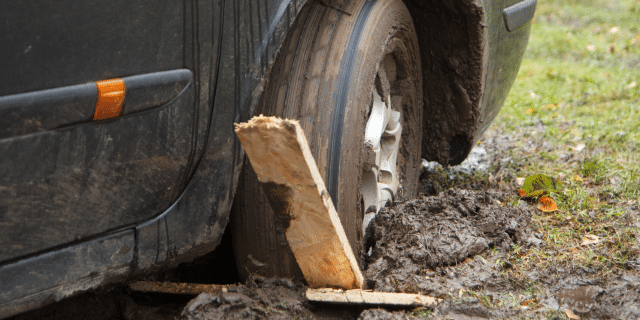
by California Casualty | Helpful Tips, Homeowners Insurance Info |
If clutter has crept into every corner of your home, spring is your golden opportunity to clear it out and start fresh. This season isn’t just about cleaning—it’s about creating space for what truly matters. Whether you’re dreaming of tidy shelves, organized closets, or just a little more breathing room, these smart decluttering tips will help you reduce the mess and refresh your mindset.
Where to Start
The clutter didn’t happen overnight—and it won’t disappear overnight either. That’s okay! Decluttering is a process, not a race. Here’s how to get started:
- Pick one clutter hotspot—a shelf, drawer, or closet. Starting small builds momentum.
- Set a timer for 15, 30, or 60 minutes—whatever works for you. This helps keep you focused and prevents burnout.
- Take before-and-after photos. You’ll be amazed at the progress, and it’ll keep you motivated.
- Enlist help. A friend or family member can make the process more fun—and help you decide what stays and what goes.
- Create a home inventory. As you declutter, jot down big-ticket items or anything valuable. It can come in handy for insurance purposes.
Want a broader strategy? Check out our blog on Easy Ways to Declutter Your Home. For now, here are room-by-room tips to guide your spring-cleaning mission.
General Decluttering Tips
Use the Four-Box Method: Label boxes or bins as Trash, Give Away, Keep, and Relocate. Sort items accordingly.
- Clear surfaces: Flat spaces attract clutter. Find permanent spots for items or consider letting them go.
- Ditch the broken stuff: If it’s beyond repair (like a broken umbrella or snapped sunglasses), it’s time to toss it.
- Let go of guilt items: If you’ve been holding on to something out of guilt—not love—donate it.
Entryway
Clear the catch-all zone: This area often becomes a drop zone. Use bins, hooks, or a small table to keep it tidy.
- Sort the mail daily:
- Open and sort as soon as you walk in.
- Create a system for bills, items to respond to, and recycling.
- Avoid the dreaded mail mountain!
Kitchen
Spices: Toss any older than a year. No scent = no flavor.
- Refrigerator and freezer: Discard expired or mystery items.
- Cookbooks: Keep only your go-to favorites. Donate the rest.
- Takeout menus and condiments: Menus are online; sauces don’t last forever—ditch the extras.
- Appliance manuals: Recycle any available manuals online. Organize your appliance warranties.
- Specialty appliances: If you haven’t used it in the past year, it may be time to let it go.
- Under the sink:
- Organize essentials within reach.
- Relocate overflow items to a closet or garage shelf.
- Drawer clutter: Use dividers for utensils, tools, and gadgets.
- Mugs: Keep your favorites. Donate duplicates.
Bathroom
Clear containers: Transparent acrylic bins let you see what you have.
- Sort by category: Hair, dental, skincare, first aid—group like with like.
- Makeup:
- Mascara: Replace every 3 months
- Foundation/Concealer: Replace annually
- Lipstick, eyeshadow, blush: Replace every 2 years
- Donate unused items in good condition.
- Medications:
- Dispose of expired or unidentifiable meds safely. Local police stations often have drop-off bins.
- Eyewear: Donate old prescription glasses and frames.
Bedroom
Clothing
- Organize by type: Lay out all jeans, skirts, or shirts. Keep what you love, donate the rest.
- One-year rule: Haven’t worn it in a year? It’s probably time to part ways.
- Donation bin: Keep a labeled bin in your closet so it’s easy to add items as you go.
Shoes and Socks
- Toss worn-out or single shoes.
- Donate pairs you haven’t worn in a year.
- Bye-bye, lonely socks! Toss any that don’t have a match.
Playroom
- Toys:
- Donate those your child has outgrown.
- Toss games with missing or broken parts.
- Crafts:
- Contain supplies to a shelf or bin.
- Use small containers or drawer organizers for easy access.
- Prevent duplicate purchases by taking inventory.
- Artwork:
- Display your child’s favorites.
- Repurpose others as wrapping paper or recycle.
Office
Receipts:
-
- Scan important ones and toss the rest.
- Remember: thermal paper isn’t recyclable.
- Cords and chargers:
- Sort, label, and get rid of the mystery wires.
- Make sure your extension cords are in good working order.
- Files and papers:
- Shred what you no longer need.
- Store important documents in labeled folders.
Books: Keep the ones that hold sentimental value or that you plan to reread. Donate the rest.
- Remote controls: Recycle the ones you no longer use.
- Media: Donate or sell CDs, DVDs, and other outdated formats.
Old paint: If it’s dried out or more than a few years old, it’s probably time to toss it (check local disposal guidelines).
- Tools:
- Hang them on utility racks or pegboards.
- Organize by type and label for easy access.
- Boxes: Go through those mystery boxes—keep what matters, recycle the rest.
Keep Clutter from Coming Back
One-in, one-out rule: For every new item you bring in, donate or discard one.
- Daily donations: Give away one item per day—365 things gone in a year!
- Avoid unnecessary freebies: Don’t bring home samples or giveaways unless you’ll use them.
- Think before bulk buying: Only stock up on what you actually use regularly.
- Reusable bags: Store them in your car so you don’t keep collecting new ones.
- Evening reset: Take five minutes before bed to clear surfaces and put things back where they belong.
Spring is the perfect time to not only declutter but to reevaluate your protection at home. A clean, organized home paired with the right insurance coverage provides the ultimate peace of mind.
This article is furnished by California Casualty, providing auto and home insurance to educators, law enforcement officers, firefighters, and nurses. Get a quote at 1.866.704.8614 or www.calcas.com.

by California Casualty | Auto Insurance Info |
Stuck in the mud? Whether you veered off the beaten path or got caught in an unexpected downpour, finding your car’s tires spinning in place can be frustrating. But don’t hit the panic button just yet—getting unstuck is easier than you may think. Before you call for a tow, try these techniques to free your vehicle and get back on solid ground.
Why Vehicles Get Stuck in Mud
There are a few common reasons why your car might end up trapped in the mud:
- The ground is too soft or wet. After heavy rain or in naturally muddy areas, the ground may not provide enough support for your vehicle’s weight.
- Your tires don’t have enough tread. Worn-out tires struggle to grip the surface, making it easier to get stuck.
- You over-revved the engine. Spinning the wheels too aggressively can dig them deeper into the mud instead of propelling the car forward.
Different Types of Mud and Their Challenges
Not all mud is the same. Different types of mud can affect a vehicle differently:
- Clay-heavy mud: This mud is extremely sticky and can cake onto tires, reducing grip.
- Sandy or silty mud: This type of mud drains water faster but can create deep ruts.
- Deep standing water with mud: This mud can flood engine components, making escape trickier.
Steps to Get Your Vehicle Free
1. Stay Calm and Assess the Situation
The first thing to do is stay calm. You’ve got this. The first step is to see if you’re able to take care of the problem, or if you need to call for help. If it’s safe to do so, step out of the vehicle and check how deep your tires are stuck. This will help you determine the best method to get unstuck.
2. Clear the Mud Around Your Tires.
Do you carry a shovel in your car? If not, you might want to add one to your car emergency kit. If you have access to a shovel or trowel, use it to dig the mud away from your tires as much as possible. If not, move on to the next step.
3. Create Traction Under Your Tires
Your tires need something solid to grip. You want to give them some traction. Look around and see what you have that might be able to do so.
- Place floor mats, car carpets, sand, gravel, towels, or non-clay kitty litter under your tires. (You can also keep some of this in your car safety kit for future emergencies.)
- You can even try rocks, twigs, or branches if available.
- Position the traction aids in front or behind the tires, in the direction you’re trying to move.
4. Adjust Your Steering Angle
It could be that your tires are in a rut. By turning your steering wheel slightly, it can allow your tires to find a fresh patch of ground with better traction. Do that as a next step, before you apply the gas.
5. Gently Accelerate
You may be anxious to get out of there but don’t press too hard on the gas pedal. That can make the situation worse by causing the wheels to spin. Apply slow, steady pressure to see if your tires can gain traction.
6. Try the Rocking Method
If your car is still stuck, gently shift between drive and reverse to create momentum. This rocking motion can help you inch your way out. Try it a few times but stop if it’s not working so you won’t cause damage to the transmission.
- If your vehicle has winter mode, a differential lock or four-wheel drive, engage it for extra power.
- If you have a manual transmission, start it in second gear to reduce wheel spin.
- If you drive a rear-wheel drive car, shift some weight to the back (such as moving heavy items to the trunk) for better traction.
7. Consider Deflating Your Tires
Letting out a small amount of air increases the tire’s surface area, improving grip. Be careful not to over-deflate—aim to maintain at least 20 PSI to avoid driving on dangerously low tires once you’re out. Make sure to reinflate as soon as possible.
8. Call for Help If Needed
If none of these methods work, it’s time to call in the professionals. A tow truck can safely get your car out. Once your vehicle is free from the mud, inspect it for any damage. Check the tires especially for cuts or bulges. Get your car washed and consider a vehicle checkup if you are concerned.
Prevent Future Mud Problems
It’s not always possible to avoid an emergency like getting stuck in the mud, but these tips can help.
- Drive carefully. Navigate muddy roads with caution and avoid areas that could have deep mud, especially during heavy rains.
- Maintain your vehicle. Check your tires to make sure they have good tread. Replace them as needed.
- Carry essential tools. Keep a shovel, floor mats and other essentials in your car for emergencies.
Finally, protect your vehicle with the right insurance for added peace of mind.
This article is furnished by California Casualty, providing auto and home insurance to educators, law enforcement officers, firefighters, and nurses. Get a quote at 1.866.704.8614 or www.calcas.com.

by California Casualty | Health, Nurses |
Flu season can feel like a marathon for nurses, with every shift presenting new challenges to stay healthy. As the frontline defense against the virus, you know how crucial it is to protect yourself while supporting your patients. From bolstering your immune system to managing stress during long hours, these flu season survival tips will help you stay strong, focused, and ready to tackle whatever comes your way. Because when you’re at your best, so is your care.
Stock Up on Essentials
Preparation is key. Ensure you have an ample supply of personal protective equipment (PPE), such as masks, gloves, and gowns, and always ensure they are properly fitted and changed between patients. Keep sanitizers, disinfectants, hand creams, and lozenges on hand. Stock your home with over-the-counter medications, thermometers, and electrolyte solutions in case you or a loved one falls ill. Having these supplies ready allows you to focus on care without unnecessary stress.
Practice Exceptional Hand Hygiene
Hand hygiene is one of the most effective ways to prevent the spread of infection. Follow strict sanitation practices, washing your hands with soap and water for at least 20 seconds after each patient interaction and after touching shared surfaces. Remember, some viruses like norovirus are resistant to hand sanitizers, so soap and water are crucial. Avoid touching your face—especially your eyes, nose, and mouth—with unwashed hands. This simple habit can dramatically reduce your exposure to harmful pathogens.
Clean and Disinfect Workspaces
Shared spaces can harbor countless germs, making regular cleaning a must. Wipe down frequently touched surfaces such as desks, telephones, computer keyboards, and breakroom appliances daily. In common areas, pay attention to high-touch points like water fountain handles and microwave door handles. Keeping these areas clean helps minimize the risk of cross-contamination.
Stay Up to Date on Vaccinations
Vaccination remains one of the most effective tools in preventing the flu. Make sure your immunizations are current, including your annual flu shot, and encourage coworkers and patients to do the same. Vaccines not only protect you but also help reduce the spread of illness within your workplace and the broader community.
Boost Your Immune System
Your immune system is your strongest ally during flu season. Fuel your body with a nutritionally balanced diet rich in fruits, vegetables, whole grains, lean proteins, and healthy fats. Stay hydrated by drinking about 2 liters of water daily and carrying a water bottle to sip throughout your shift. Prioritize healthy sleep habits, aiming for 7-9 hours per night to allow your body to recharge. Incorporate stress-reducing activities like deep breathing exercises, meditation, or yoga into your routine. Regular physical activity can also boost your immunity. Find a workout you enjoy to help you stay motivated.
Manage Your Workload Effectively
A well-organized workload can reduce stress and improve efficiency. Start by prioritizing patient care based on urgency and complexity, focusing on high-risk patients first. Bundle similar tasks together to save time and energy. For example, group medication rounds or paperwork sessions to streamline your day. Delegate non-critical tasks to coworkers when appropriate, allowing you to concentrate on providing the best possible care.
Address Stress and Fatigue
Prolonged stress and fatigue can weaken your immune system, leaving you more vulnerable to illness. Incorporate short self-care breaks into your day to recharge. Use these moments to practice deep breathing, stretch, or enjoy a brief moment of mindfulness. Make restful sleep a priority, even if it means adjusting your schedule. Create a calming bedtime routine to signal to your body that it’s time to rest.
Collaborate with Your Healthcare Team
Effective communication with your team is vital during flu season. Maintain open lines of communication with fellow nurses, physicians, and caregivers to ensure efficient workflows and minimize gaps in care. Share updates on patient conditions, supply needs, and any changes in protocol. A united team effort can make a significant difference in managing the demands of flu season.
If You’re Sick, Stay Home
As a nurse, it’s natural to want to push through illness, but it’s essential to prioritize your health and the safety of those around you. If you feel unwell, take the time to recover. Stay hydrated, treat aches and fever with over-the-counter medications, and rest as much as possible. Cover your mouth and nose when coughing or sneezing and run a humidifier to ease congestion. Remember to replace your toothbrush after recovering from an illness to avoid reinfection.
Flu Season Preparedness at Home
Don’t forget to prepare your household for flu season as well. Encourage family members to practice good hygiene and stay up to date on their vaccinations. Designate a sick room for anyone who becomes ill and establish a cleaning routine to keep the rest of your home germ-free. By creating a safe and clean environment at home, you’ll minimize the risk of spreading illness within your family.
Stay Positive
Flu season can be challenging, but maintaining a positive mindset can make a big difference. Focus on the small wins, like successfully preventing an illness or seeing a patient recover. Celebrate your hard work and dedication, knowing that your efforts are making a meaningful impact in the lives of your patients and community.
This article is furnished by California Casualty, providing auto and home insurance to educators, law enforcement officers, firefighters, and nurses. Get a quote at 1.866.704.8614 or www.calcas.com.

by California Casualty | Health, Helpful Tips |
Balancing work and personal life during the holidays can feel like a juggling act. That’s especially true for shift workers on the front line—EMTs, nurses, police officers, and firefighters. While others are wrapping gifts or planning holiday feasts, you’re often working long shifts, answering urgent calls, or preparing for the next day’s challenges. Even if you’re not a first responder, chances are the holidays are a stressful and hectic time with shopping, family gatherings, and a long to-do list.
But here’s the good news: with a little planning and focusing on what really matters, you can still soak up the festive spirit and make it all work.
Set Boundaries
- Communicate your availability to family, friends, and colleagues in advance.
- Be clear about work commitments and carve out protected time for personal activities.
- If you’re feeling pressured from friends or family to do more—buy more gifts, cook more food, or attend every gathering—remember that it’s okay to say no.
- Know your stressors and take steps to minimize or avoid them.
Embrace Teamwork and Flexibility
- Coordinate with coworkers to swap shifts or share responsibilities, ensuring everyone gets some holiday time.
- Be open to celebrating on alternate days if you’re scheduled to work on the holiday.
- Don’t take on more than you can handle. Work with your team to prioritize what really needs to be done, and what can wait.
- Be flexible. Things won’t always go the way you planned. Keep your attitude positive and adjust as needed.
Plan Micro-Moments of Joy
- Integrate small holiday traditions into your daily routine, like sipping hot cocoa during a break or wearing festive socks.
- Bring the holiday spirit to work by decorating your workspace or sharing treats with colleagues.
- Notice the little moments of the season—the bustle of a holiday market, the scent of gingerbread cookies, the feeling of warmth and connection with those around you.
- Enjoy a quiet moment among the holiday decorations after loved ones have gone to bed. Reflect on the true meaning of the season.
Simplify Holiday Expectations
- Focus on meaningful, stress-free traditions rather than trying to do everything perfectly.
- Delegate tasks like cooking or gift shopping to family members or opt for simpler solutions like potluck dinners.
- Avoid over-scheduling yourself. Prioritize activities that truly matter to you and your loved ones, and don’t feel pressured to participate in every event.
- Limit gift-giving. Instead of buying multiple gifts, consider giving a meaningful single gift, writing heartfelt cards, or even creating a holiday tradition of spending quality time together.
Celebrate Togetherness Around Your Schedule
- Find opportunities to connect with loved ones, even briefly, such as a quick morning coffee or exchanging handwritten notes.
- Invite family or friends to join you for breakfast or lunch if you’re working late shifts.
- Participate in community events or host small gatherings around your schedule.
- Use technology to stay connected, like video calls during downtime.
- Ensure you’re eating well, staying hydrated, and getting enough sleep to maintain energy and focus.
- Schedule time for activities that help you decompress, such as exercise, meditation, or a favorite hobby.
- Leave work at work. Spend your off-duty time focusing on your needs.
- Disconnect from social media and you’ll be surprised at how much time it adds to your day.
Schedule Everything
- Write everything into your schedule so you’ll have a better idea of your commitments. Then cross off anything that doesn’t align with your values or bring you joy.
- Give yourself the gift of time. Put personal downtime in your schedule and honor it as you would an appointment or commitment.
- Add a holiday cushion of extra time between appointments so you’re not constantly rushing.
- Not everything has to be scheduled during the holidays. Push some of your commitments beyond the holiday and into the new year. This is an easy way to extend the season while reducing your stress.
Reflect and Express Gratitude
- Take time to acknowledge the importance of your work and the impact you have on others.
- Keep a gratitude journal where you write down moments of thankfulness, big or small, to help cultivate a positive mindset throughout the season.
- Share gratitude with coworkers and family to create a positive, uplifting environment.
- Practice mindfulness to appreciate the moments you have with loved ones, no matter how brief.
As you navigate the hustle and bustle of the holiday season, remember to prioritize what matters most—your well-being, your loved ones, and the moments that bring you joy. From all of us at California Casualty, we wish you a stress-free, joyful holiday season filled with peace, gratitude, and unforgettable memories. Happy holidays!
This article is furnished by California Casualty, providing auto and home insurance to educators, law enforcement officers, firefighters, and nurses. Get a quote at 1.866.704.8614 or www.calcas.com.
by California Casualty | Educators, In Your Community, News |
Congratulations to all of the recipients of the 2024 California Casualty Music & Arts Grants! Our field team had the privilege to connect both in-person and virtually with many of the grant recipients to present them with a check for $250 to put towards supporting...




